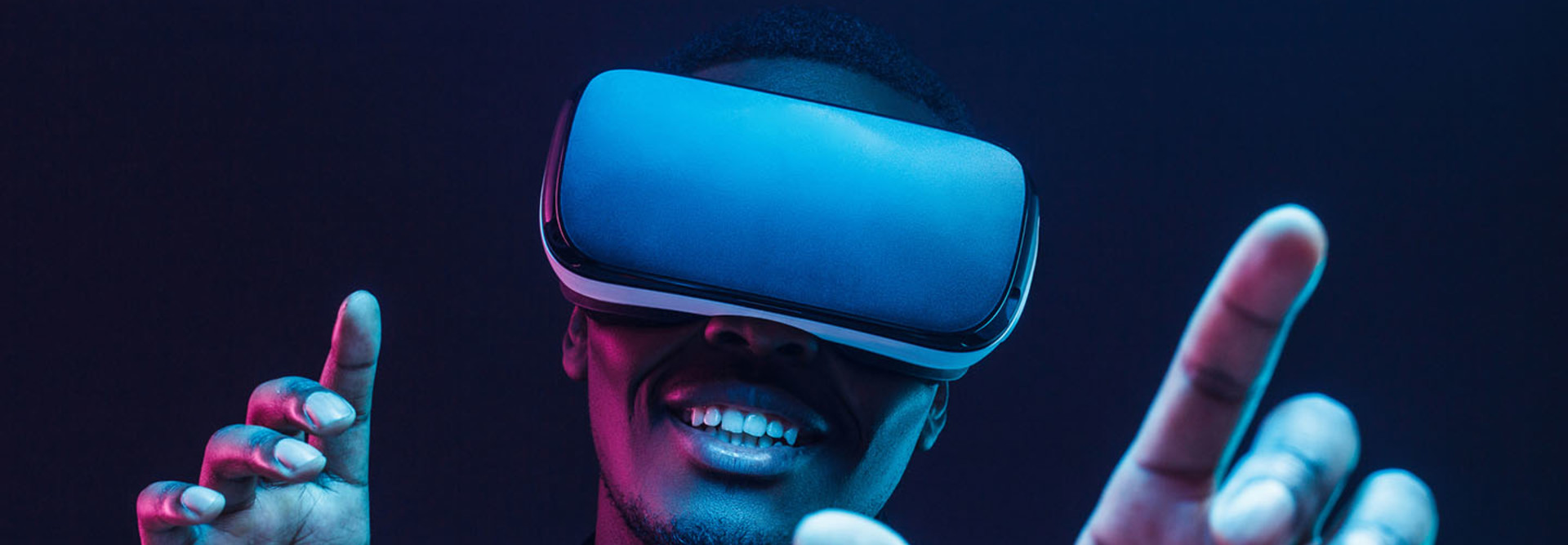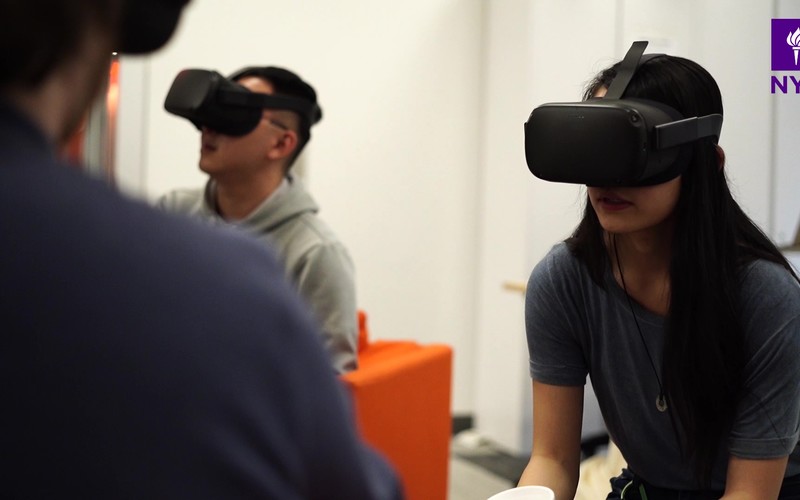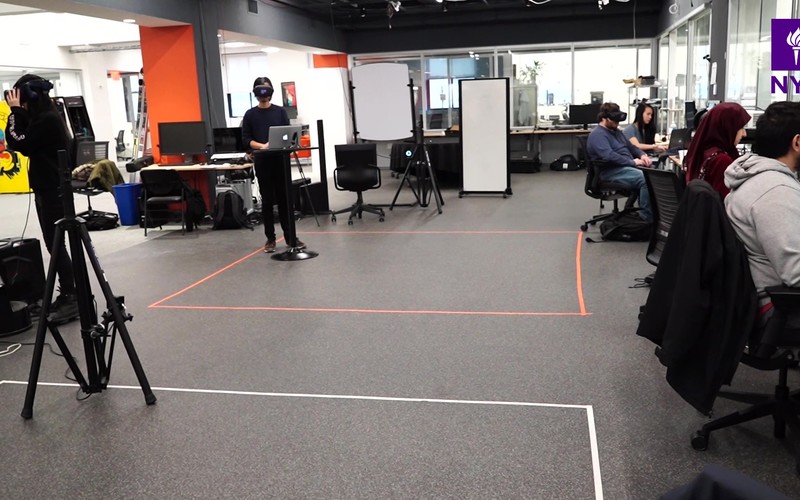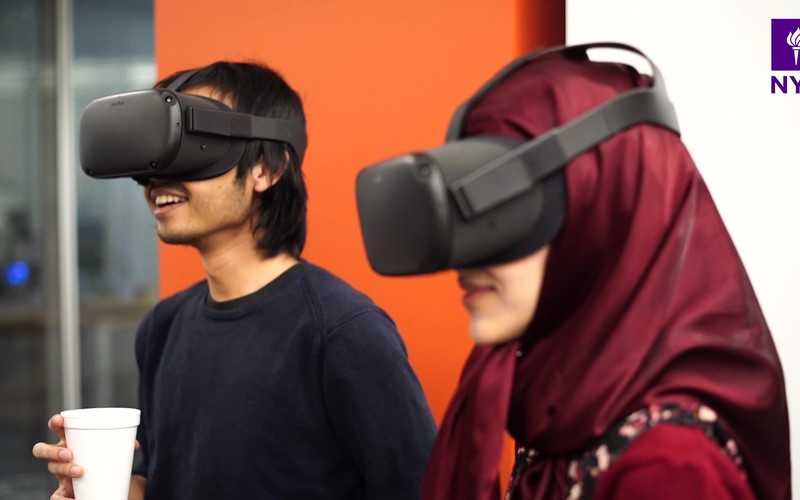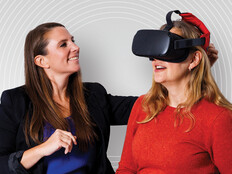Mistakes Help Write the Rules for VR Interaction and Cooperation
The massive advances in VR tracking make getting into virtual reality more attainable for colleges that may lack the budget or space for a dedicated lab full of specialty equipment. And because the aesthetics of VR experiences are still very much developing, even tracking errors can turn out to be happy accidents.
“We put on a theater piece at the Future of StoryTelling Festival in 2017,” says Perlin. The lab was presented with a scene from Alice’s Adventures in Wonderland; both the actors and the audience were in the VR environment.
“At some point, three of us who had created the piece together were in the experience, trying it out, and something went wrong,” says Perlin. “Instead of being in Alice’s drawing room at the beginning, with a nice chandelier on the ceiling, suddenly we were floating up by the chandelier.”
They quickly realized two things, says Perlin: First, they had a bug in the tracking software. Second, it was incredibly cool.
“Nobody planned that, but once it happened, we thought, ‘We have to build this kind of stuff into future experiences, because this is just delightful,’” he says.
People are also still writing the rules for how to interact and cooperate in VR. Perlin gave the example of a time when he had three people in a shared drawing experience at a conference in Germany and one participant’s controller stopped working.
“We were like, ‘Oh, no! We have three people and only two controllers! Should we go on with the experience?” he said.
In fact, the loss of one of the controllers improved the experience.
“Now they’re handing these things back and forth to each other and having a much better time because it’s more of a social experience,” explains Perlin. “And that was an accident.”
So, what’s coming in the next five years that will continue to alter how we use VR? Perlin is betting on feet: His lab is experimenting with shoes that, combined with other body-worn components, allow for full-body representations of multiple users in a VR environment.
“In five years, that technology will just be built into all shoes everywhere,” he says.



